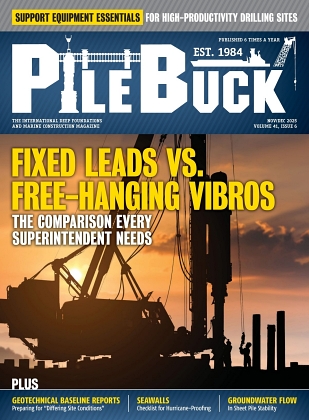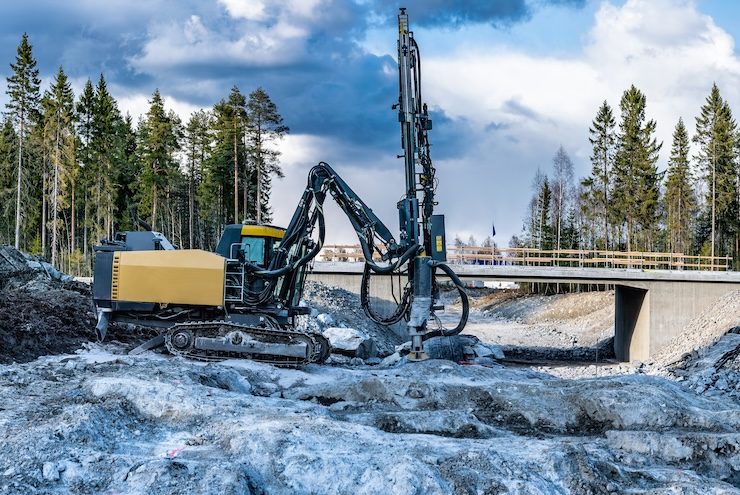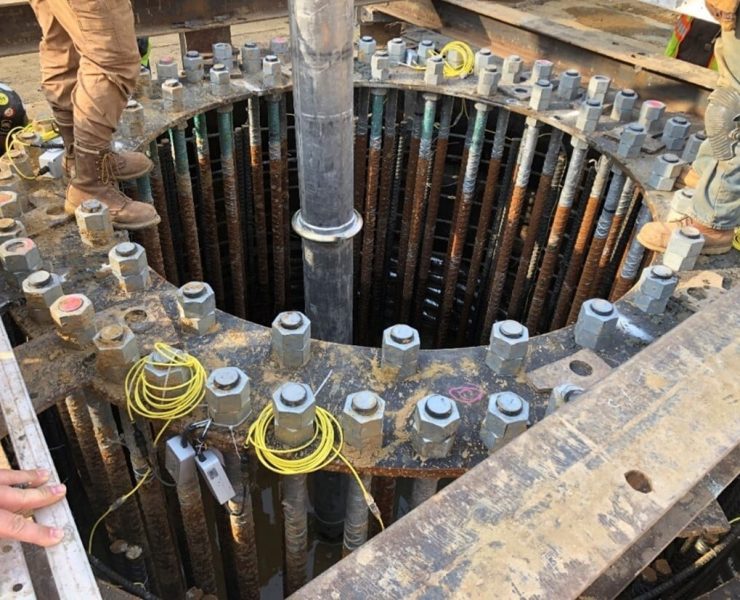Mastering Pile Driving and Foundation Drilling Across Diverse Soil Types
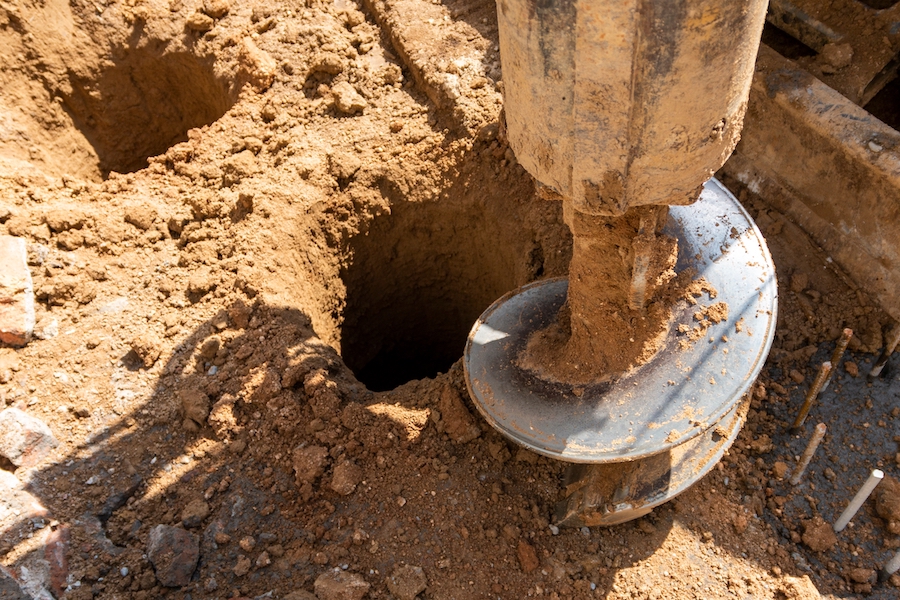

View the complete article here.
This guide is intended for contractors, engineers, and site managers—offering an in-depth understanding of how to approach the vast array of soil types encountered in the field. From the clay beds of river deltas to the rocky substrates of mountainous terrain, this article illuminates the challenges and solutions for establishing solid foundations across our planet’s diverse geological landscapes.
Comprehensive Classification of Soils
A thorough understanding of soil types is essential for any pile driving or foundation drilling operation, as the soil’s characteristics dictate the methods and equipment that can be used.
Basic Soil Types
The most common soil types encountered in deep foundation applications includes…
Clay is fine-grained and exhibits high plasticity when wet. Clay can be very hard when dry and is known for its swelling and shrinking behavior as its moisture content changes. Its load-bearing capacity improves when compacted, making it stable, but challenging to drill due to its stickiness and tendency to hold water.
Silt particles are smaller than sand but larger than clay. They feel smooth and can retain water, but are more stable than pure clay. Silty soils can be prone to compaction and may cause problems with subsoil drainage in construction.
Composed of coarse particles, sand has good drainage and is relatively easy to compact. However, sand lacks cohesion—making it less stable for foundation support unless properly compacted or combined with other soil types.
Gravel soils contain larger, rounded, or angular particles and have excellent drainage. They provide good bearing capacity for foundations and can be compacted to form a dense and stable base.
Peat is an organic-rich soil that is soft, highly compressible, and holds a large amount of water. It’s generally not suitable for supporting foundations without significant treatment or stabilization.
Loam is a balanced mixture of sand, silt, and clay. It is often considered the ideal soil type due to its favorable properties, like moisture retention and nutrient-richness—making it easy to work with for various construction needs.
Additional Soil Types
Although less common, these additional soil types are also encountered during deep foundation projects…
Chalk is a soft, white limestone. It is often found in areas with historical geological marine activity. It can pose drilling challenges due to its hardness variability and the presence of flints.
Rocky or bedrock soils include solid rocks like limestone, granite, and basalt. Drilling through bedrock requires specialized equipment, and the choice of technique is critical to manage costs and maintain structural integrity.
Silty clay are hybrid soils with both silt and clay characteristics, creating a range of challenges that include both the plasticity of clay and the compaction issues of silt.
Expansive soils, including some clay types, expand as they absorb water and shrink upon drying—leading to significant structural movement.
Often dry and strong when undisturbed, collapsible soils can collapse and settle when they become wet—which can undermine foundations if not identified and treated.
Fill soils have been moved from their original location and redeposited. They can vary widely in composition and behavior, often requiring careful analysis and treatment.
Characterized by their saturation with water for long periods, hydric soils can be challenging for construction due to their softness and instability.
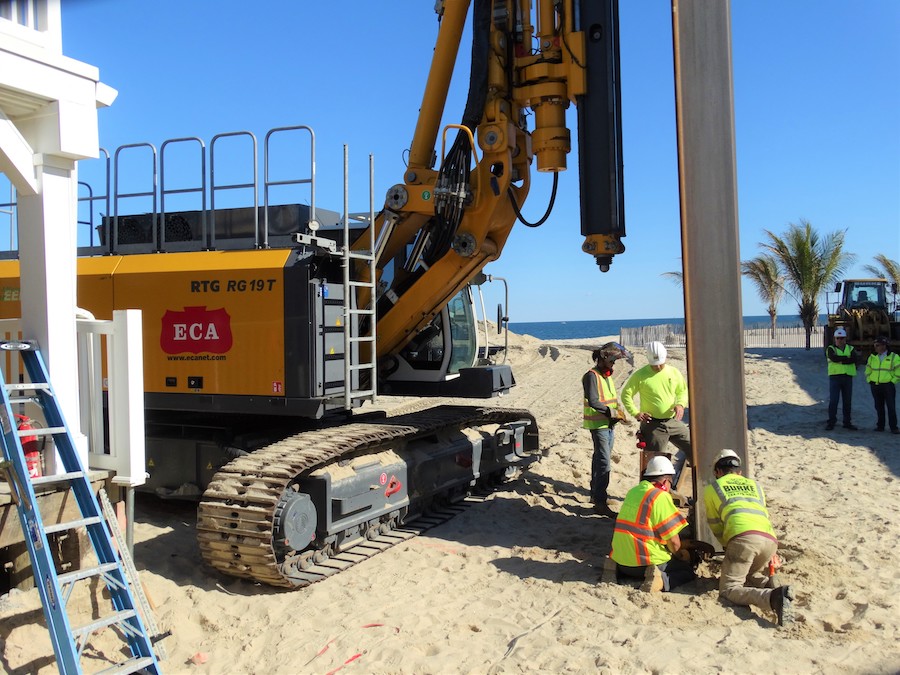
Global Distribution
Soil types are distributed across the globe—influenced by factors like climate, vegetation, parent rock, and landscape history. Common examples include:
- Clay soils are often found in river deltas and former glacial areas.
- Silt is common in floodplains and river valleys.
- Sandy soils are typically seen in deserts and beaches.
- Gravel soils often originate from river terraces and ancient glacial deposits.
- Peat is usually located in cold and temperate regions with high levels of rainfall.
- Loam is widespread and can be found in many agricultural regions due to its fertility.
Pile Driving Techniques for Diverse Soils
Pile driving techniques must be carefully selected to address the unique properties of each soil type. These methods are refined through real-world applications and technological advancements…
Continuous flight auger (CFA) piling is effective in clay soils, as it minimizes soil disturbance. In the Shanghai Tower project, CFA piling was used to manage the soft clay conditions—supporting China’s tallest building by reducing settlement.
For silty soils, vibro piling can be advantageous—as it densifies the soil. The Riverbank House in London used vibro compaction techniques to reinforce the silty ground of the Thames’ banks.
Pre-drilling followed by driving cast-in-situ concrete piles is a common approach in sandy soils, as seen in the construction of the Burj Al Arab in Dubai—which ensured stability in the loose desert sands.
Heavy-duty pile driving with drop hammers can be effective in dense gravel, exemplified by the foundation work in the Hoover Dam—where piles were driven deep into the river’s gravel bed.
Floating piles or driven timber piles are used to reach stable strata beneath peat, as demonstrated in the construction of roads across the peat bogs in Ireland.
Standard pile driving is typically suitable for loamy soils, given their balanced properties. An example is the suburban developments across the American Midwest.
Pile driving in chalk may require pre-drilling, as seen in the foundations for the White Cliffs Visitor Center in Dover—where the iconic chalk cliffs dictated a sensitive approach.
Micro-piling is often used in rocky terrains. The Taipei 101 Tower utilized micro-piles to anchor the structure into the bedrock, enabling it to withstand typhoons and earthquakes.
Driven piles with permanent steel casing can combat the water sensitivity of silty clay soils, a technique used in the construction of New Orleans levees.
Piles designed with sliding joints accommodate soil movement, a method employed in the foundations of the AT&T Stadium in Texas to address the expansive clay.
Ground improvement through controlled saturation or compaction grouting before piling is key. The Centennial Hills Hospital in Las Vegas used such techniques before building on collapsible soils.
In areas with fill soils, like the artificial islands in Osaka Bay, H-piles were used extensively—driven deep to reach the natural strata below the fill.
For hydric soils, as found in the Florida Everglades, specialized floating equipment is necessary to drive piles without disrupting the saturated ground.
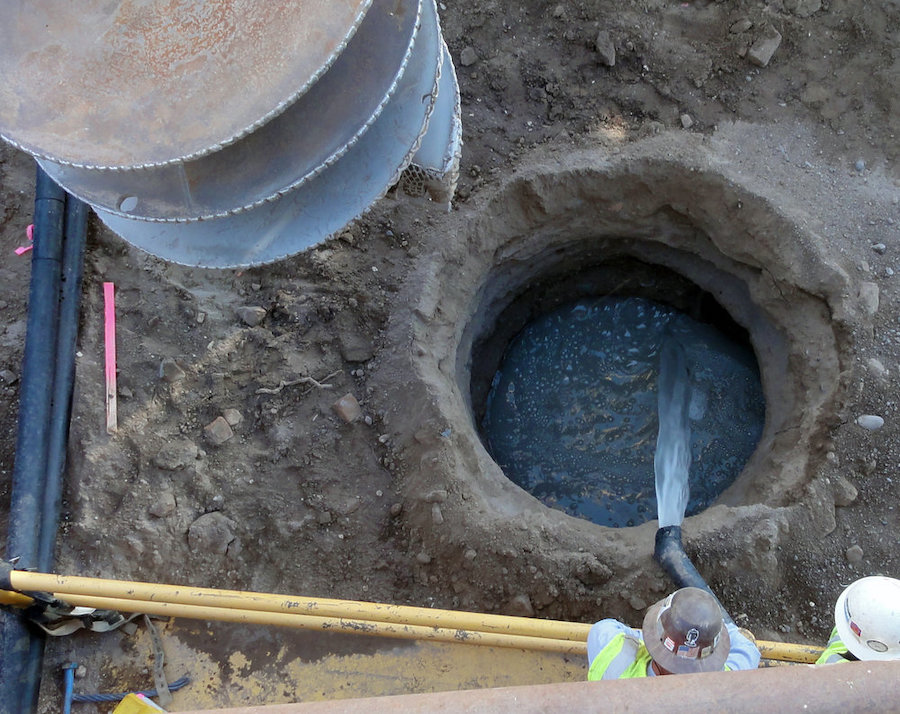
Foundation Drilling Techniques for Diverse Soils
Foundation drilling is a sophisticated process that requires an understanding of soil mechanics to ensure the stability and integrity of the structure it supports. Different soils require specific drilling techniques to manage their unique characteristics.
Rotary boring is a preferred method in clay, where the use of temporary casings or drilling fluid can stabilize the borehole. The Federation Tower in Moscow utilized rotary boring to accommodate the clay’s plasticity and prevent borehole collapse.
For silty soils, hollow stem auger drilling can be effective—as it allows for casing to be advanced simultaneously with the borehole. This was used in the construction of the Thames Barrier, which protected against the silty riverbed.
In sandy soils, utilizing drilling fluid helps maintain the stability of the borehole. This technique was pivotal in constructing the foundations of the Palm Jumeirah islands in Dubai, preserving the hole integrity in the shifting sands.
Air rotary drilling is suitable for gravel as it helps in the removal of cuttings and maintains a clear hole. This method was applied in the Alaskan Way Viaduct replacement tunnel in Seattle, drilling through gravelly glacial till.
Continuous flight auger (CFA) drilling avoids soil removal and minimizes disturbance, which is crucial in peat. This technique was utilized in the construction of the M7/M8 motorway in Ireland, which traverses extensive peat bogs.
Direct push technology can be used in loamy soils for smaller scale foundation drilling, due to its relatively easy penetration and sample collection capabilities. This was seen in various agricultural building projects across the fertile Great Plains in the USA.
Reverse circulation drilling is effective in chalk, preventing hole collapse by using air to bring cuttings to the surface. The Channel Tunnel connecting the UK to France employed this technique to manage the chalk strata.
Core drilling is essential for rocky soils to extract solid cores for examination. The construction of the foundations for One World Trade Center in New York used core drilling to ensure stability in the bedrock.
Dual rotary drilling can be beneficial in silty clay soils, allowing for casing advancement in unstable ground. The technique was used for the foundations of the New Safe Confinement structure in Chernobyl.
Overburden drilling systems are designed to handle the variable conditions of expansive soils. The foundations for the Fort Worth Museum of Science and History in Texas were constructed using this adaptable technique.
Drilling with casing advancement is necessary to prevent borehole collapse in collapsible soils. This method was used in the construction of the Las Vegas High Roller observation wheel.
Bucket auger drilling is often used in fill soils to clear out loose debris and ensure a clean hole. This method was chosen for the construction of Tokyo Disneyland, built on land reclaimed from the sea.
For hydric soils, floating platforms may be necessary to support drilling rigs. The Florida Everglades restoration projects use such platforms to conduct drilling operations without disturbing the wetlands.
Innovations and Technological Advancements
The field of foundation engineering is continually evolving, with new technologies and methods emerging to tackle complex soil challenges. These innovations not only enhance efficiency and safety but also broaden the scope of what’s possible in construction. Here’s an overview of the latest advancements and how they’re addressing the intricacies of soil behavior.
Equipped with sensors, smart piling systems provide real-time data on pile behavior during installation, allowing for adjustments in technique to suit the soil conditions encountered. This is particularly useful in heterogeneous soils, where conditions can change unexpectedly.
Augmented Reality (AR) technology is being used for visualizing subsurface conditions, which helps in planning the drilling or piling work more accurately—thereby reducing the risk of encountering unforeseen soil challenges.
Advanced soil stabilization methods such as chemical and polymer soil stabilizers can transform the properties of problematic soils, like expansive clays or peats—making them more suitable for foundation work.
Developed to reduce the noise and vibration associated with traditional pile driving—non-vibratory pile installation techniques, like press-in piling, also minimize disturbance to surrounding structures and are ideal for urban settings with strict regulations.
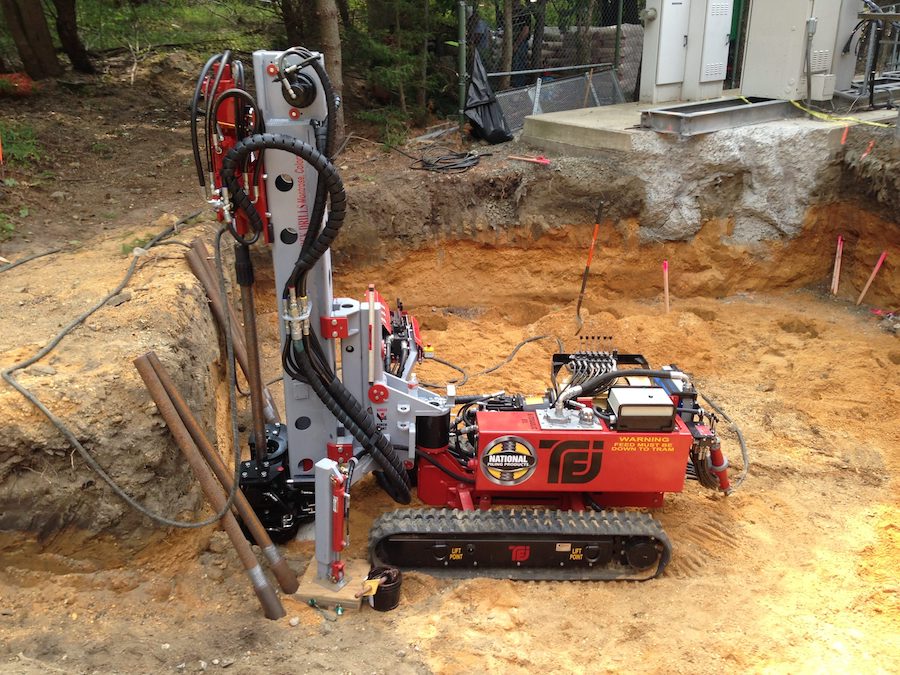
Addressing Soil Challenges
Innovations like expandable rock bolts and adjustable pile systems are being used to accommodate the movement in expansive soils, thereby mitigating the risk of structural damage due to soil swelling or shrinking.
Ground-improvement techniques, such as dynamic compaction and jet grouting, have been advanced to address the instability of collapsible soils before construction begins—ensuring a more predictable and stable foundation.
The development of more efficient dewatering pumps and vacuum consolidation methods has vastly improved the process of preparing soft clay and silt sites for construction, expediting the consolidation process and enhancing the soil strength.
Laser scanning and 3D modeling techniques now allow for the precise mapping of bedrock topography. This, combined with more powerful and precise drilling rigs, enables the installation of foundations in rocky terrains with minimal overbreak and better structural integrity.
Conclusion
The successful execution of pile driving and foundation drilling projects hinges on a nuanced understanding of the soil landscape. The diverse soil types, each with its own set of characteristics and challenges, require specialized techniques and innovative approaches to ensure structural stability. As the industry continues to evolve with new advancements, the foundational knowledge of soil behavior remains a cornerstone for building the infrastructure of tomorrow.
View the complete article here.
What are some common soil types encountered in foundation drilling, and how do they impact construction?
Common soil types include clay, silt, sand, gravel, peat, and loam, each with unique properties influencing the choice of drilling or piling techniques for stable foundations.
How do technological advancements, such as smart piling systems and augmented reality, contribute to addressing soil challenges in foundation engineering?
Smart piling systems provide real-time data on pile behavior, while augmented reality aids in visualizing subsurface conditions, allowing for more accurate planning and adjustments during drilling or piling in complex soil conditions.

